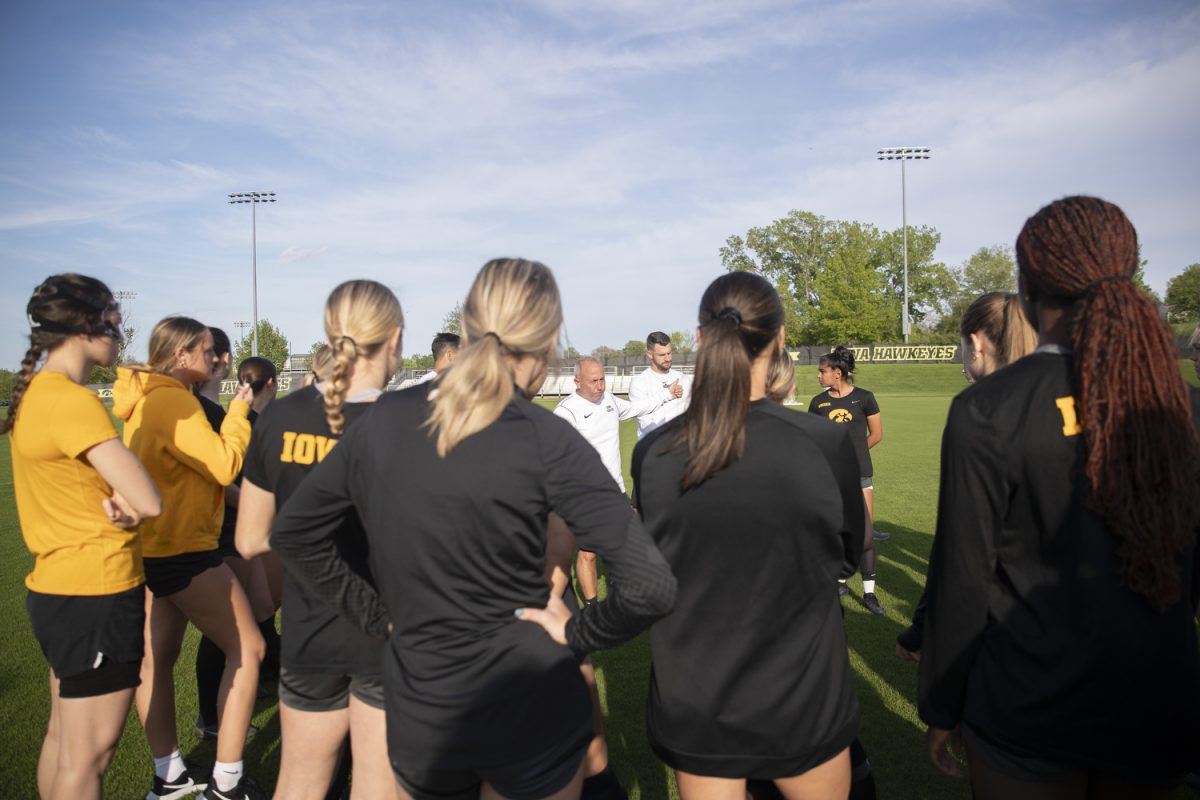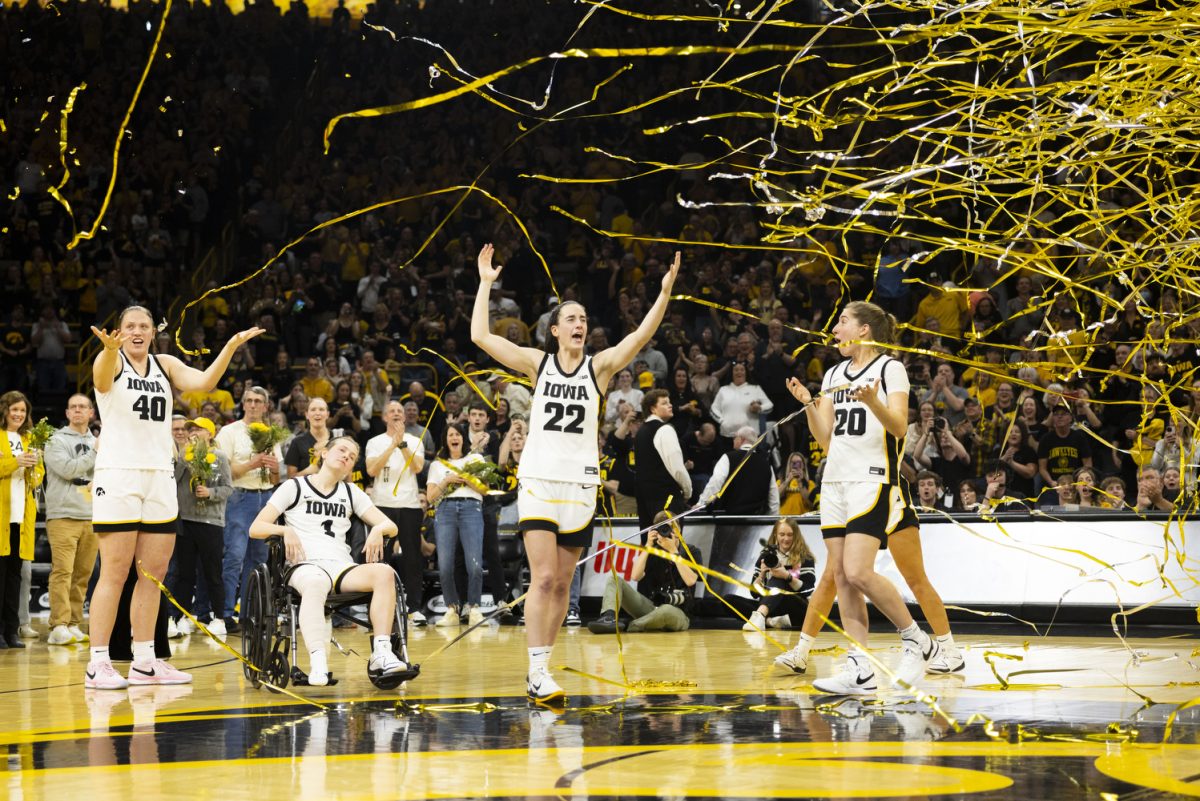To the casual viewer, a relay race looks pretty simple.
“When somebody makes something look simple and easy, those are probably some good athletes,” head coach Larry Wieczorek said. “Michael Jordan made basketball look pretty easy.”
What observers don’t see are the countless hours of preparation and repetition needed to make what would otherwise be a rocky race appear smooth. Each member has his own specialty in the relay.
The lead leg of the 4-by-100 relay, run by sophomore D’Juan Richardson, is an event usually saved for the athlete most adept at getting off the blocks, something he has proven thus far.
The second runner has to run slightly farther than the other legs, and he should be the squad’s speediest sprinter, especially on straight-aways. In the Hawkeyes’ case, that spot belongs to junior Zeke Sayon.
Third-leg duties are reserved for good curve runners, a spot taken by junior Stephen Bee. Bee has a knack for the 200-meter race, which incorporates mostly running on a curve.
Anchoring the final leg is sophomore Patrick Richards. The last slot can also serve as a place to put a team’s fastest runner, and it is ideal for the second quickest sprinter as well.
“This is probably one of the races where if you slip up, it’s going to be very detrimental to the team,” Bee said. “One second could mean going to nationals or not. It’s very tactical.”
With everything that happens in a race that usually lasts around 40 seconds, in an instant, a perfectly good run can go awry. Dropping the baton, failing to handoff the baton in the designated zone, or improper timing on handoffs can all be a relay runner’s downfall.
“I’m kind of holding my breath in big meets,” Wieczorek said. “All of a sudden, there’s a botched exchange, and a lot of things can go wrong.”
That’s one reason the Hawkeyes pay so much attention to the most minute details — often, athletes with more honed baton skills can beat a team of faster runners. The Hawkeye quartet makes sure to practice the baton skills outside of track.
Track and field events are generally thought of as individual events, but the relay offers a more team-oriented performance, one that Sayon likens to football.
“If one person doesn’t block for another person, he’s going to get his lights cleaned,” he said. “The other guys have to trust that I’m fast enough.”
Without a sense of camaraderie and reliance, most relay teams are destined to come up short. Bee said the runners have a good connection because of time spent together outside of the relay.
“We all know when one of us is having a bad day,” he said. “We hang out outside the track, too. [On the track] we don’t want to let each other down.”






